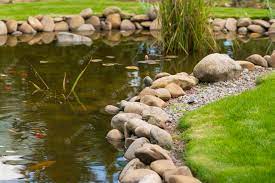Introduction:
Creating a garden lake can transform your outdoor space into a serene and captivating oasis. Whether you have a sprawling backyard or a cozy patio, a well-designed garden lake can enhance the overall aesthetics and provide a tranquil retreat for relaxation. In this guide, we will explore the essential steps and considerations for designing a stunning garden lake that will become the centerpiece of your outdoor sanctuary.
Step 1: Assessing the Space and Planning
Evaluate the Available Space: Begin by assessing the available space in your outdoor area. Take into consideration the land’s size, shape, and topography to identify the optimal placement for your garden lake. Take note of any existing features, such as trees or structures, that could influence the design and placement.
Define the Purpose: Determine the purpose of your garden lake. What is your desired goal: to create a tranquil water feature, establish a habitat for aquatic plants and wildlife, or develop a recreational space for swimming and boating? Defining the purpose will guide the design and help you select appropriate features.
Set a Budget: Establish a budget for your garden lake project. This will help you prioritize your design elements and make informed decisions throughout the process.
Step 2: Designing the Garden Lake
Shape and Size: Choose the shape and size of your garden lake based on the available space and your design preferences. Popular options include rectangular, circular, or natural-looking irregular shapes. Make sure the lake’s size is in proportion to the surrounding landscape.
Water Source and Circulation: Determine the water source for your garden lakes. It could be a natural spring, a well, or a connection to your home’s water supply. Plan for proper water circulation by incorporating a filtration system, pumps, and aerators to maintain water quality and prevent stagnation.
Plant Selection: Select a variety of aquatic plants suitable for your garden lake. Consider plants such as water lilies, lotus, water hyacinths, and submerged plants. These plants not only enhance the aesthetics but also contribute to maintaining a thriving ecosystem by oxygenating the water and creating a habitat for fish and other wildlife.
Hardscape Features: Incorporate hardscape features like pathways, bridges, and seating areas to enhance accessibility and enjoyment of the garden lakes. Choose materials that blend harmoniously with the surrounding landscape, such as natural stones, wood, or decorative concrete.
Step 3: Maintenance and Care
Regular Cleaning: Maintain the cleanliness of your garden lakes by regularly removing debris, fallen leaves, and algae buildup. Use appropriate tools like nets and pond vacuums to keep the water clear and healthy.
Water Quality Management: Monitor and manage the water quality by testing and adjusting the pH levels, nutrient levels, and oxygen content. Use appropriate treatments and additives as needed to maintain a balanced and thriving aquatic ecosystem.
Seasonal Care: Consider seasonal care requirements for your garden lakes. In colder climates, prepare for winter by protecting plants and fish from freezing temperatures. In warmer climates, be mindful of excessive evaporation and adjust water levels accordingly.
Conclusion:
Designing a garden lake offers a wonderful opportunity to create a captivating outdoor oasis. By carefully assessing your space, planning the design, and implementing proper maintenance, you can enjoy the serenity and beauty of your garden lake for years to come.

